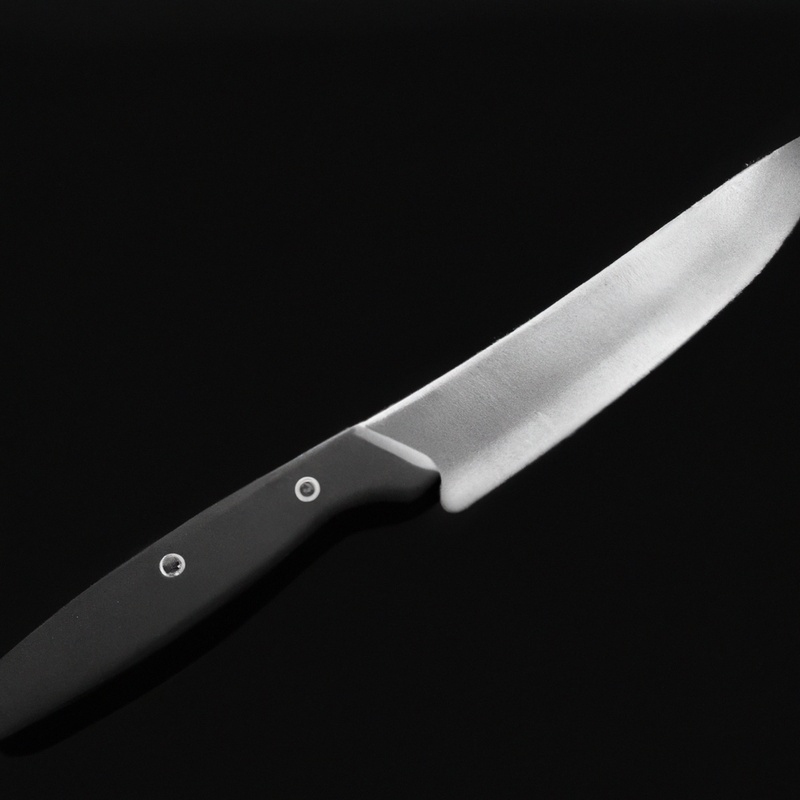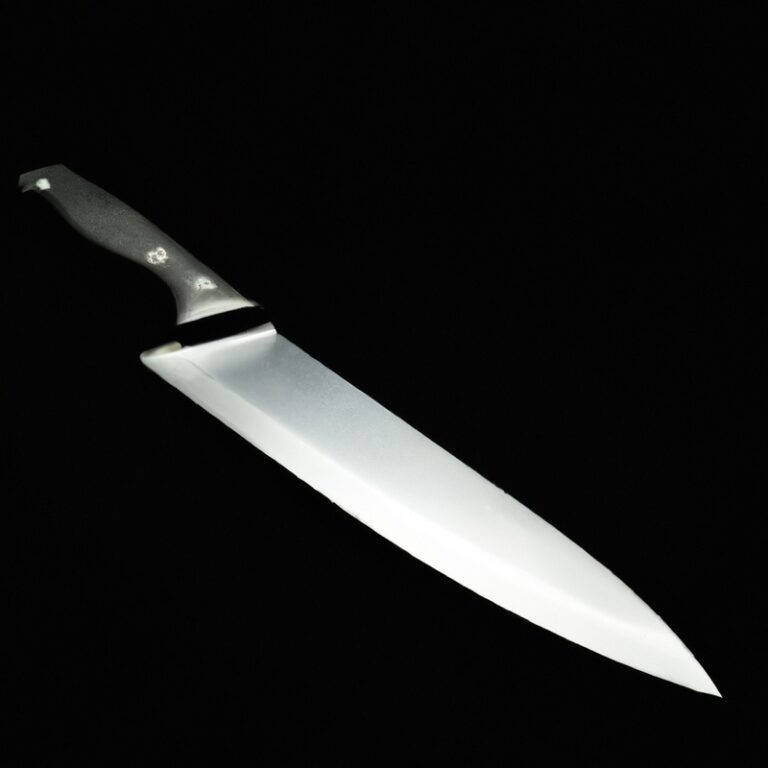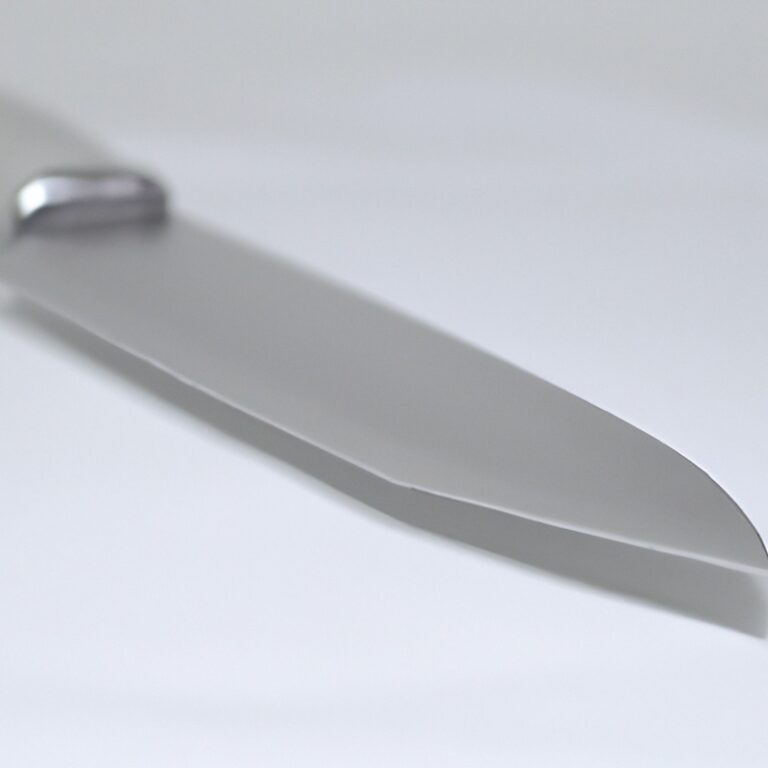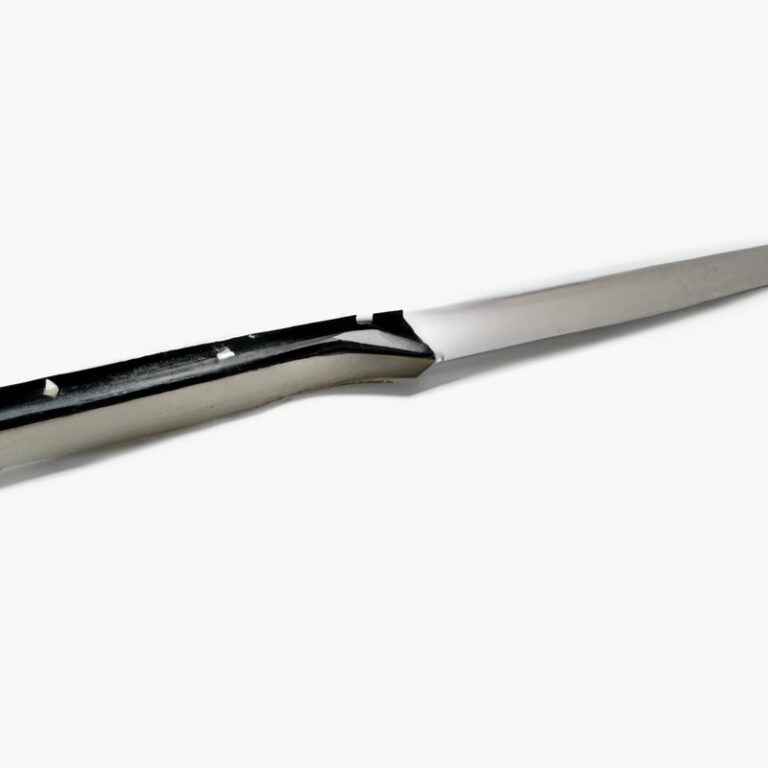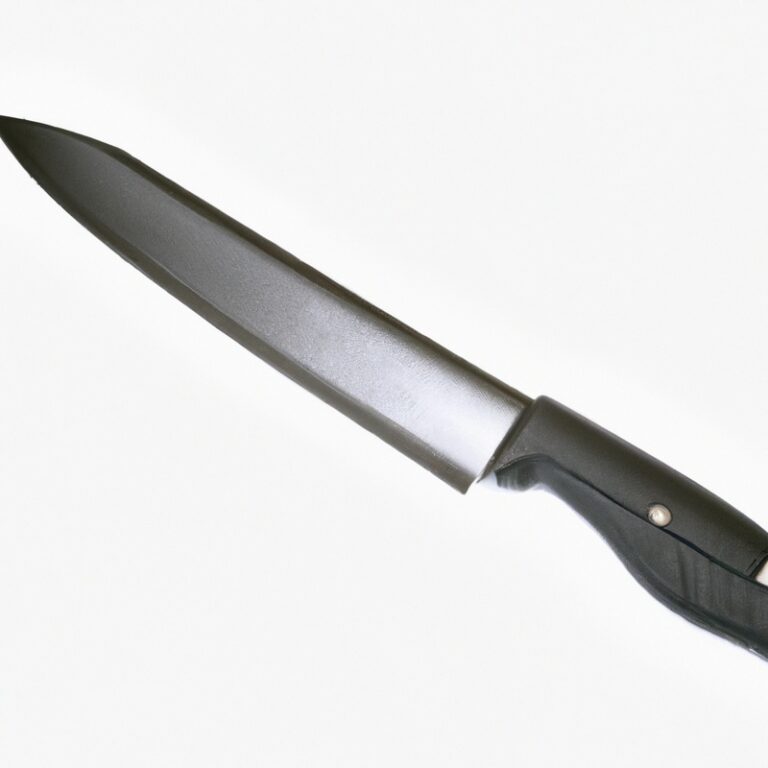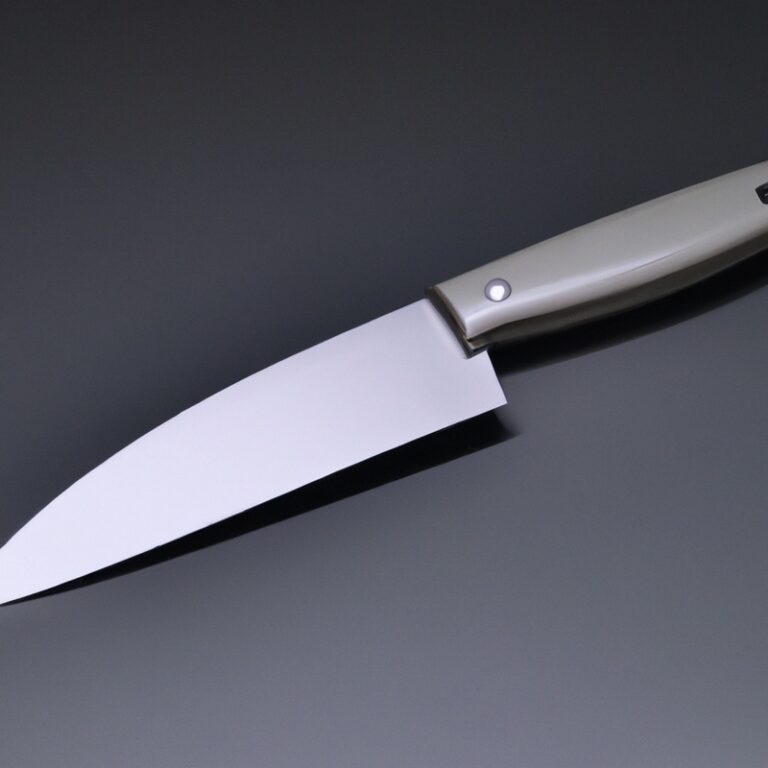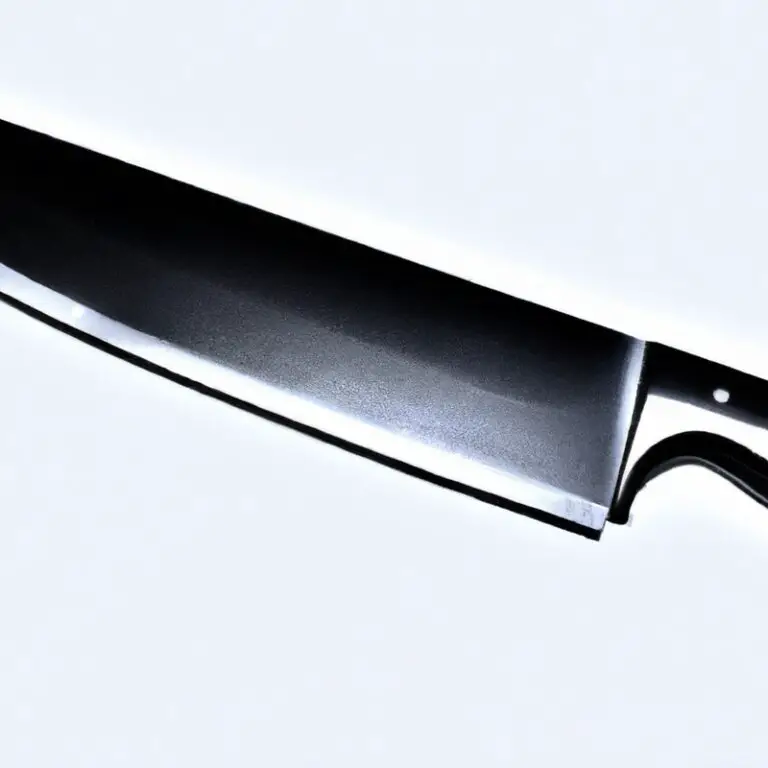What Are The Advantages Of Using a Serrated Knife For Cutting Through Soft, Delicate Cakes?
Key Takeaways:
- Serrated knives provide better grip and control when cutting soft, delicate cakes.
- The saw-like edge of a serrated knife prevents the cake from getting crushed or squished during cutting.
- Serrated knives make it easier to achieve clean and precise slices on delicate cake layers.
- Using a serrated knife reduces the chances of creating crumbs or tearing the cake while cutting.
Imagine this: you’ve just baked a beautiful, soft, delicate cake. The last thing you want is for it to crumble and fall apart as you try to cut a perfect slice.
That’s where a serrated knife swoops in to save the day.
In this blog article, I’ll be your guide as we explore the advantages of using a serrated knife for cutting through those delicate confections. From clean and precise cuts to preventing your cake from sticking to the knife, you’ll discover why this trusty tool is a baker’s best friend.
So, let’s dive in and slice away!
| Advantages of Using a Serrated Knife for Cutting through Soft, Delicate Cakes |
|---|
| Serrated knives have small, pointed teeth along the blade that allow for better grip and control when cutting through soft, delicate cakes without crushing or tearing them. |
| These teeth provide increased surface area, reducing the amount of pressure needed to slice through the cake, resulting in more precise and even cuts. |
| The saw-like motion of a serrated knife helps to create clean, smooth cuts through delicate cakes, preventing them from crumbling or falling apart. |
| The sharp, angled teeth of a serrated knife are especially effective for cutting through cake layers with fillings, ensuring clean edges and preventing the layers from sliding or shifting during cutting. |
| Serrated knives are also versatile and can be used for other tasks in the kitchen, such as slicing bread, tomatoes, and other soft foods, making them a practical addition to any kitchen toolset. |
What is a serrated knife?
Definition and characteristics of a serrated knife
A serrated knife is a type of cutting tool with a jagged or toothed edge. It is commonly used for slicing through soft, delicate foods like cakes and pastries.
The teeth on the blade allow for clean and precise cuts, minimizing cake crumbling and preventing sticking.
Serrated knives come in various sizes and styles, and their sharp blades make them effective for cutting through tough-skinned fruits, bread, and pastries as well. It’s important to keep the knife clean and sharp for optimal performance.
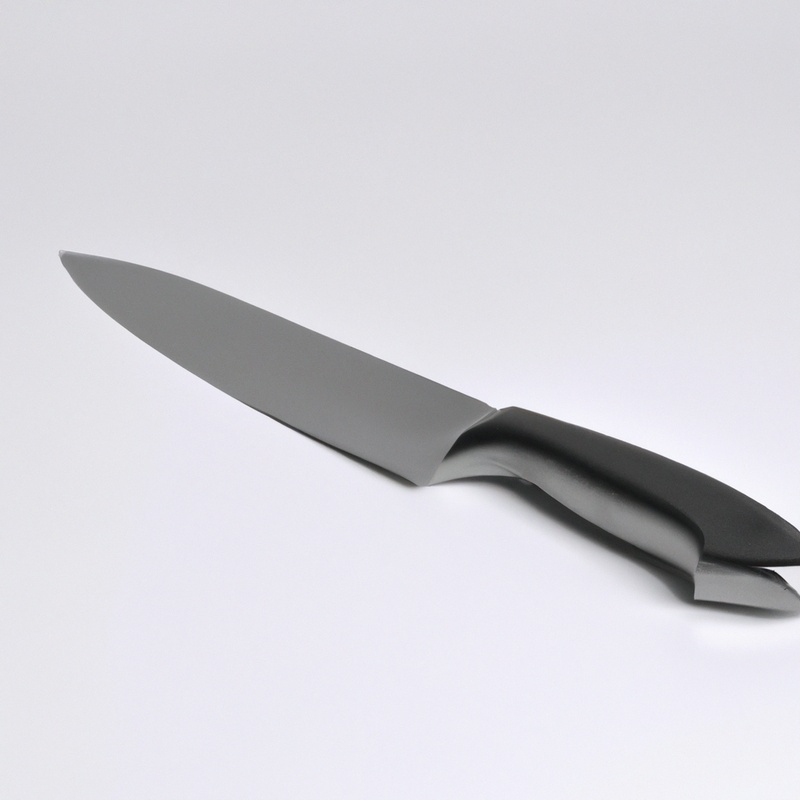
Types of serrated knives available
When it comes to serrated knives, there are a few types available to choose from. One common type is the bread knife, which features a long, serrated blade that easily cuts through crusty bread without squishing it.
Another type is the offset serrated knife, which has a curved handle that allows for better control and precision while cutting.
Additionally, there are serrated utility knives that are smaller and versatile, perfect for slicing through fruits, vegetables, and small cuts of meat. Ultimately, the type of serrated knife you choose depends on your specific needs and preferences.
Advantages of using a serrated knife for cutting cakes
Clean and precise cuts
A serrated knife offers clean and precise cuts when slicing through soft, delicate cakes. The serrated edge allows the knife to grip the cake’s surface without crushing it, resulting in neat slices with minimal crumbs.
Unlike a straight knife, the jagged teeth of a serrated knife make it easier to navigate through delicate layers without causing them to shift or collapse.
This ensures that each slice maintains its shape and presentation. Additionally, the sawing motion used with a serrated knife prevents the cake from sticking to the blade, making the slicing process smoother and more efficient.
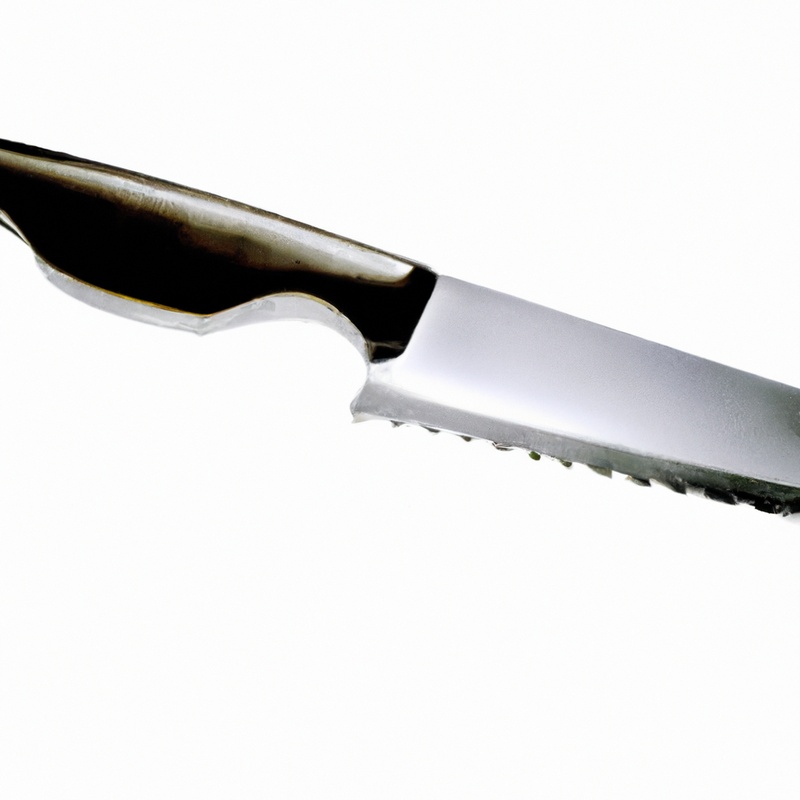
Minimizes cake crumbling
A serrated knife is a game-changer when it comes to cutting soft, delicate cakes. One of its major advantages is that it minimizes cake crumbling.
The serrated edges of the knife grip the cake gently, preventing it from easily breaking apart.
This means you can make clean, smooth cuts without worrying about the layers falling apart. Say goodbye to messy, crumbled slices and enjoy beautifully intact pieces of cake.
It’s a small but significant feature that makes a big difference in your cake-cutting experience.
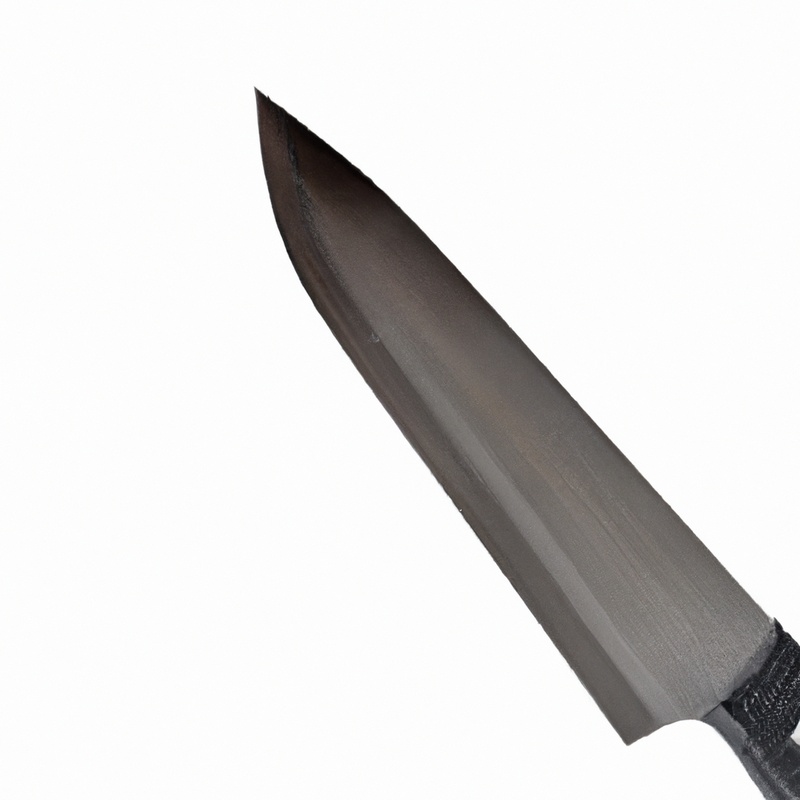
Easy slicing through delicate layers
Serrated knives are great for slicing through delicate cake layers with ease. The serrated edges of the knife allow for a gentle sawing motion, preventing the layers from getting crushed or torn.
As the knife glides through the cake, it creates clean and precise cuts, ensuring that each slice looks beautiful and presentable.
The sharp teeth on the blade grip the soft cake layers, making it easier to control and navigate through the cake without causing any damage. With a serrated knife, you can effortlessly slice through delicate layers and create perfectly cut cakes every time.
Prevents cake from sticking to the knife
A serrated knife is the perfect tool for cutting through soft, delicate cakes because it prevents the cake from sticking to the knife. The teeth on the serrated edge create small gaps, allowing air to escape and reducing the chances of the cake sticking.
This ensures clean and smooth cuts, without ruining the cake’s texture or appearance.
So, if you want to slice through your cake effortlessly, without any messy sticking, a serrated knife is the way to go.
Tips for using a serrated knife properly
Choose the right size and style of serrated knife
When choosing a serrated knife for cutting cakes, it’s important to consider the right size and style. Look for a serrated knife with a blade length that matches the size of your cakes, typically around 8-10 inches long.
This ensures you have enough length to cut through the entire cake without squishing it.
As for the style, opt for a knife with a pointed tip for better control when slicing through delicate layers. Additionally, choose a knife with a comfortable handle that allows for a secure grip.
Use a sawing motion while cutting
When using a serrated knife to cut through soft, delicate cakes, it’s important to use a sawing motion. This means gently moving the blade back and forth while applying light pressure.
Avoid pressing down too hard, as this can cause the cake to crumble or become misshapen.
By using a sawing motion, you can achieve clean, precise cuts without damaging the cake’s texture. It’s a simple technique that ensures your cake slices look and taste their best.
Keep the knife clean and sharp
To keep your serrated knife in optimal condition, it’s important to keep it clean and sharp. Regularly wash the knife by hand using mild soap and warm water, and dry it thoroughly to prevent rusting.
Avoid using abrasive cleaners or scouring pads that could damage the blade.
Additionally, make sure to sharpen the serrated blade using a serrated knife sharpener or a honing rod specifically designed for serrated knives. This will ensure that the knife cuts smoothly and efficiently every time you use it.
Other uses for a serrated knife
Cutting bread and pastries
Cutting bread and pastries with a serrated knife is a breeze. The sharp, jagged edge of the knife glides through crusty bread without squishing it.
It makes clean, even slices without tearing the delicate texture of pastries.
Whether you’re slicing a loaf of freshly baked bread or cutting through layers of flaky croissants, a serrated knife is the go-to tool. Its teeth grip the surface, allowing for precise cuts and preventing the bread or pastry from crumbling.
With a serrated knife, you can enjoy perfectly sliced baked goods every time.
Slicing tomatoes and other soft fruits
Serrated knives are excellent for slicing tomatoes and other soft fruits. The teeth on the blade allow for smooth cutting without crushing the delicate flesh.
Just be sure to choose the right size and style serrated knife for the job.
When using, gently saw back and forth instead of applying pressure. Keep the knife clean and sharp for effortless slicing.
It’s a game-changer when it comes to handling soft fruits with precision and ease.
Opening tough-skinned fruits like melons
Opening tough-skinned fruits like melons is a breeze with a serrated knife. The sharp teeth of the serrated blade easily grip and penetrate through the tough skin of melons, making it easier to cut and remove the rind.
As you slice through the fruit, the serrations help to prevent the knife from slipping, ensuring a safer and more efficient cutting experience.
Whether you’re slicing watermelon, cantaloupe, or honeydew, a serrated knife is the perfect tool for the job. Just be sure to choose a serrated knife with a long blade to easily glide through the thick skin of the melon.
Maintenance and care of a serrated knife
Cleaning and drying the knife
Cleaning and drying a serrated knife is essential for maintaining its sharpness and preventing any food residue from sticking to the blade. To clean the knife, simply wash it with warm soapy water and a soft sponge or cloth.
Make sure to pay attention to the serrations, using a gentle back-and-forth motion to remove any particles.
Rinse off the soap and dry the knife thoroughly to prevent rusting. Avoid using abrasive cleaners or scrub brushes, as they can damage the serrations.
Proper cleaning and drying will prolong the life of your serrated knife and ensure safe and effective use.
Sharpening the serrated blade
To sharpen a serrated blade, you will need a sharpening rod or a serrated knife sharpener. Start by placing the rod or sharpener in the scallop of the serration, matching the angle of the serrations.
Use a back-and-forth motion to gently sharpen each serration.
Repeat this process for all the serrations on the blade. It’s important to be careful and not apply excessive pressure, as it can damage the blade.
Regular sharpening will ensure that your serrated knife remains effective and efficient for cutting through soft, delicate cakes.
Final Verdict
Using a serrated knife for cutting through soft, delicate cakes offers several advantages. The serrated blade allows for clean and precise cuts, minimizing cake crumbling and ensuring a beautiful presentation.
The sawing motion of the serrated knife makes it easy to slice through delicate layers without damaging the structure of the cake.
Additionally, the serrated edges prevent the cake from sticking to the knife, ensuring smooth and effortless cutting. Overall, using a serrated knife can elevate your cake cutting experience and result in professional-looking slices.
Trust me, as an expert, I strongly recommend using a serrated knife for cutting cakes.

